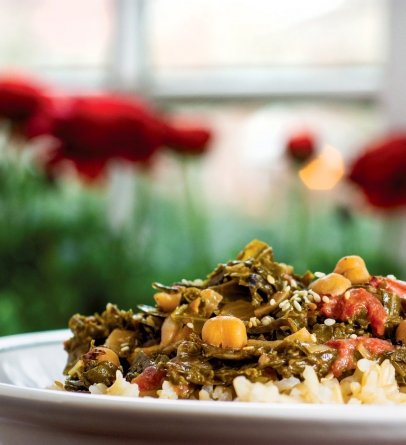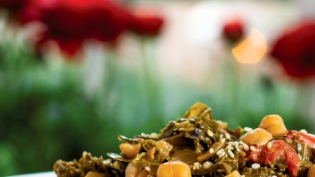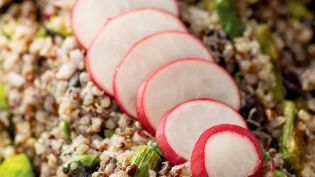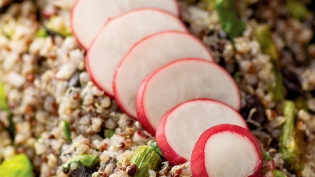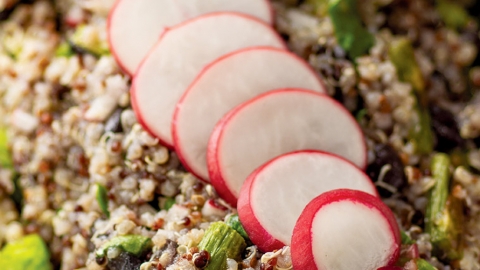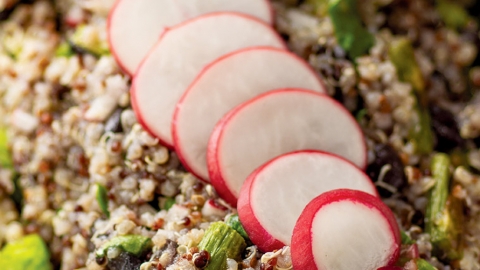Cooking Fresh: Hitting Your CSA Stride
As a mom and a former newspaper food writer and farmers’ market manager, I have answered every kind of question about cooking and the food we eat. But no one seems as daunted as those receiving the first shares from their “community-supported agriculture” (CSA) produce subscriptions.
There’s so much good about the CSA way of buying: Purchasers pay at the beginning at the season and then all summer they have access to a large amount of ever-changing seasonal vegetables grown at a nearby farm.
But that’s also the weakness of the weekly share: What are all these vegetables, how do I use them all in a week and how do I serve them to my family?
As a farmers’ market manager, I was prone to say, “Peel it, roast it and put it in quinoa salad.”
Glib but true, at least with eggplant and butternut squash and many root vegetables. It doesn’t cover everything. Zucchini and fennel and green beans don’t need peeling. Radishes, some turnips, Sugar Snap peas and green onions don’t need roasting (though they can be). And what about those fluffy bunches of greens, so prevalent in the spring? They take up the entire refrigerator and just how many ways are there to eat those?
Dark leafy greens are arguably the super-est of superfoods, so it’s great if you can find a few ways you love them rather than give up. Lettuce can, of course, be made into salads. Some heads can be grilled. And leaves can be chopped and put into the inevitable quinoa salad.
Kale — often singled out as the most overwhelming product in many CSA shares — can go into nearly any dish. I buy a couple of cases during the summer to stem, blanch and freeze for winter. One easy way to cook kale is sautéed with loads of garlic, red pepper and olive oil. Kale cooked this way can be then mixed with sausage or not to stir into cooked rice, or spooned over pasta, used to fill a baked potato or combined with black beans for a burrito filling.
Often after the third or fourth delivery of a CSA you develop a rhythm. Sometimes it involves inviting friends over, or cooking a large batch of something to freeze half for later. At our Sunday night dinners I make lots of extras and send containers home with people.
Sarah Fritschner is the principal of Grow Kentucky and a frequent contributor to Edible Louisville & the Bluegrass.
Too many vegetables?
You’ll find lots of help on the internet for storing, preserving and cooking the excess. Here are a few resources.
• There’s an easy-to-use PDF at www.fruitsandveggiesmorematters.org/wp-content/uploads/UserFiles/File/pdf/why/Storing_Fruits_Veggies_FINAL.pdf
• There’s a nifty site on storing vegetables at www.halfyourplate.ca/
• The National Center for Home Food Preservation has a comprehensive set of resources for storing, canning, freezing, drying, smoking and all manner of preservation at nchfp.uga.edu/index.html
• The University of Kentucky has a guide to freezing vegetables at franklin.ca.uky.edu/files/fcs3-335_-_freezing_vegetables.pdf
• Mother Earth News, as you would expect, gives a more personal view on freezing vegetables, with quick tips and go-arounds. www.motherearthnews.com/real-food/freezing/freezing-vegetables-zebz1309zstp
• Fermenting vegetables preserves them, makes them delicious and adds important probiotics. Sandor Katz is the fermenting expert. He has a beginners-guide video www.youtube.com/watch?v=i77hU3zR-fQ


